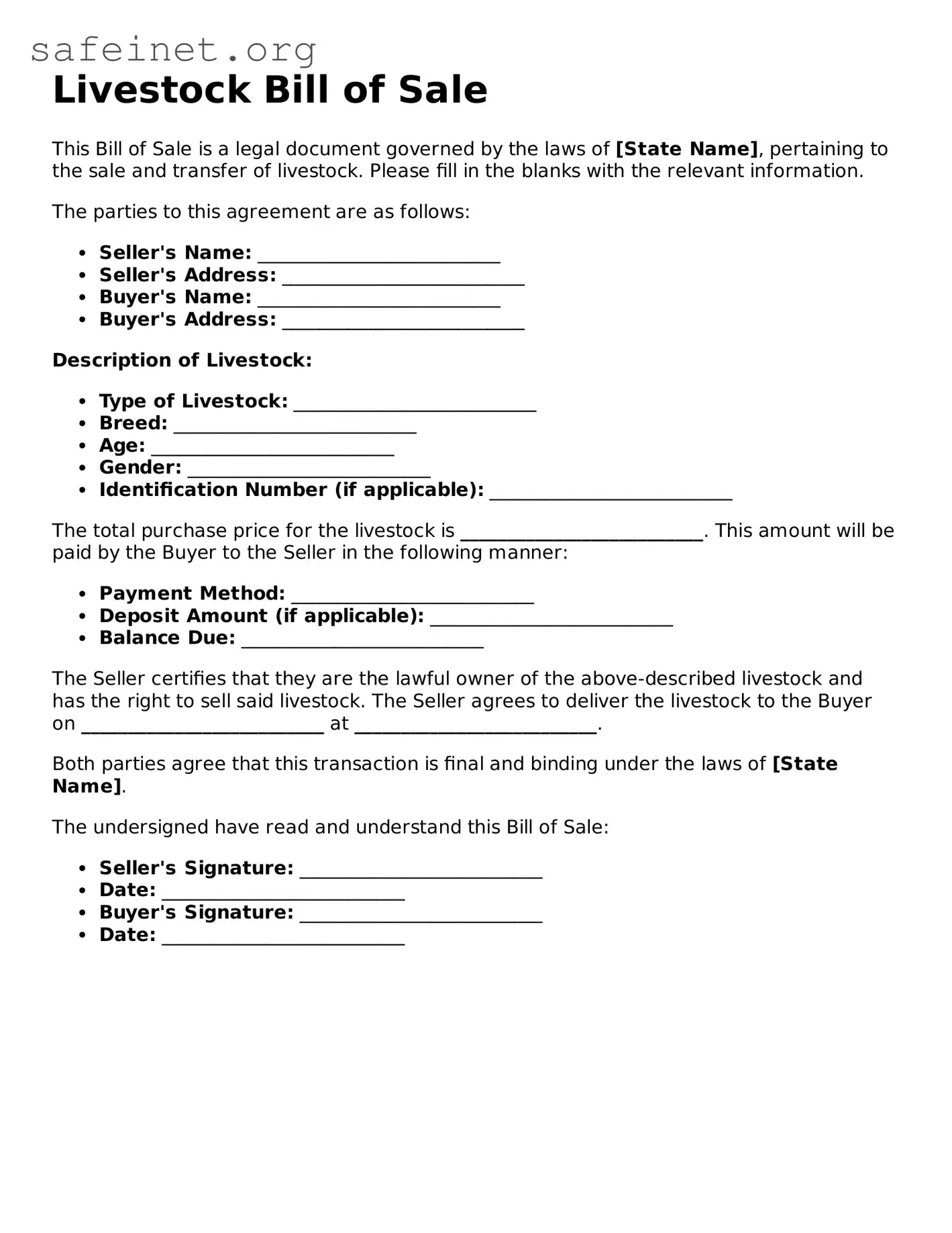What is a Livestock Bill of Sale form?
A Livestock Bill of Sale form is a legal document that records the transaction between a seller and a buyer of livestock. This document serves as proof of purchase and outlines important details about the livestock, such as the type, quantity, and sale price. It is essential for both parties to have a clear record that facilitates ownership transfer and may assist in any future disputes regarding ownership or health concerns related to the animals sold.
Why is it important to use a Livestock Bill of Sale form?
Using a Livestock Bill of Sale form is crucial for several reasons. First, it provides legal protection for both the buyer and the seller. In the event of a disagreement, this document can serve as evidence in court. Second, it helps ensure that important information about the livestock, such as registration details or health records, is properly documented. Lastly, some states may require this form for livestock sales to comply with local laws and regulations.
What information should be included in the Livestock Bill of Sale form?
The form should include the names and addresses of both the buyer and the seller. Additionally, it should specify details about the livestock, such as type (e.g., cattle, pigs, sheep), quantity, breed, age, and any identifying marks or ear tags. The sale price, date of sale, and any warranties or guarantees regarding the animals’ health should also be clearly stated. Including these details can help prevent misunderstandings and disputes later on.
Is a notarized signature required for a Livestock Bill of Sale?
While notarization is not always necessary for a Livestock Bill of Sale, having the document notarized can provide an extra layer of protection. A notary public can verify the identities of both parties involved in the transaction, which may lend credibility to the document. Some buyers or sellers may prefer a notarized document for peace of mind, especially in high-value transactions.
Can a Livestock Bill of Sale be used in other states?
A Livestock Bill of Sale can often be used in other states, but it's essential to check the regulations specific to each state. Some states may have specific requirements for livestock sales documentation. It is advisable to ensure that the form complies with the laws in both the seller's and buyer's states to avoid potential legal complications.
What happens if I lose the Livestock Bill of Sale?
If you lose the Livestock Bill of Sale, it can be challenging, but there are steps you can take. First, try to recreate the document by gathering all relevant information about the transaction, including any receipts, communications, or photos of the livestock. It's also helpful to contact the other party involved in the sale, as they may have a copy. Having a new Bill of Sale created and signed by both parties can serve as a replacement, ensuring that the transaction remains documented.
Are there any fees associated with a Livestock Bill of Sale?
Typically, there are no official fees for creating a Livestock Bill of Sale, as it is generally a straightforward document that can be drafted without legal assistance. However, if you choose to have the document notarized, there may be a fee for the notary's services. Additionally, if you seek legal advice or assistance in drafting the document, those services may incur costs. Overall, it is advisable to consider the importance of accurate documentation in livestock transactions against any potential fees you may encounter.
